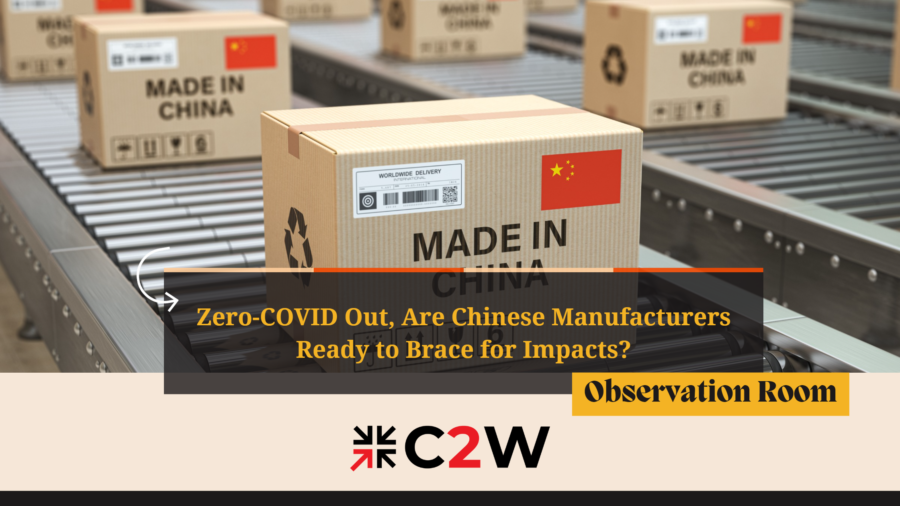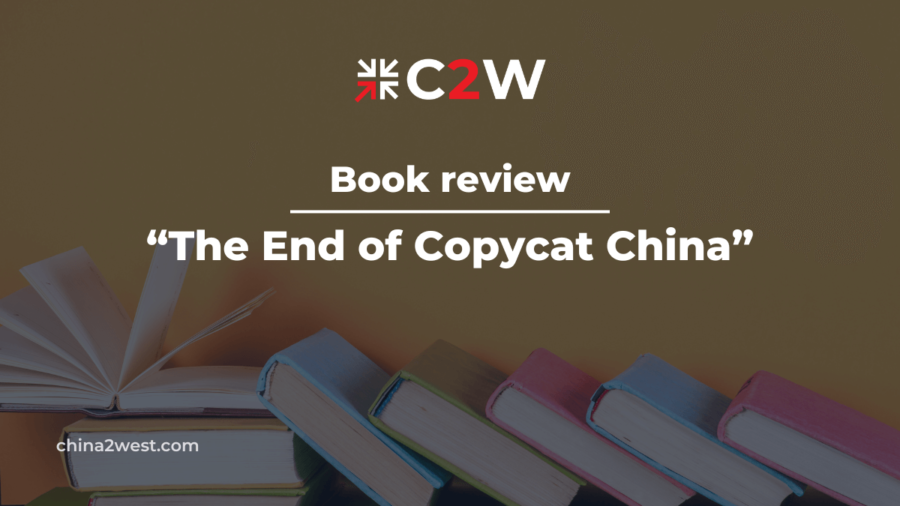It was a sharp U-turn that nobody had expected.
Seemingly in response to the little fires of protests spread out in over 20 Chinese cities, Beijing announced a hasty exit from the controversial zero-COVID policy, rolling back nearly all pandemic control measures, such as mass covid-testing or residential confinement. Even starting on January 8, no more mandatory quarantine will be required for international arrivals.
But this drastic contrast to the previous adamancy in containing the virus at all costs, emphasized slightly a month ago by the Chinese leadership, was likely attributed to more than public fury. The crippled economy and drained local government finance have already revealed the unsustainability of such draconian measures since the emergence of Omicron.
However, with a twist so sharp, it takes tolls to keep up, especially the manufacturing industry.
The matter at hand right now is to survive this wave of disruptions. Are Chinese manufacturers ready, and how should they get ready?
Labor Shortage Will Last a Few Months
China’s decision to abandon its zero-COVID policy has been met with support from Chinese manufacturers. For months, the world’s second-largest economy had been under a strict set of public health restrictions, hindering many manufacturers’ ability to produce goods.
Right off the bat, manufacturers from different Chinese regions have already formed groups to travel overseas as soon as the new policy was announced.
However, despite their favorable stance, a labor shortage is also expected to persist in China for the next few months.
Little time has been left for factories to brace for the abrupt disruption, and the manpower shortage, due to the unprecedented rise of infected cases and removal of the closed-loop management of workers, has forced many of them to close for Chinese New Year almost a month in advance.
What’s worse, the previous Zero-COVID policy led to the displacement of millions of migrant workers and factories are still struggling to make up for their losses. Despite the increased availability of raw materials, there is still not enough manpower from the get-go to effectively operate the factories and meet the demands of customers, especially when the holiday shopping season is right around the corner.
But overseas businesses still embrace the easing of restrictions and keep a positive outlook for the future, as the overall situation will become more predictable and transparent.
More Ports Will Become Available, But Shipping May Still Be Delayed
With entry restrictions out of the way, ports in border provinces have become functional for freight again to boost trade.
But that doesn’t necessary signal a good sign for sea freight.
None of the major seaports for international trade has been closed in zero-COVID times, even during the lockdown in Shanghai. But the safety measures implemented by the government required crew members and workers on cargo vessels to be quarantined after a trip. This resulted in an added burden on ports and has increased the cost of operation.
Although it is no longer the case, the same logics behind. This time, we will still be looking at staffing shortage, as port and cargo employees may have reported too sick to come to work.
The backlogs don’t just happen on water, but also on land. Ground shipping services have been falling behind on transportation too, again, due to insufficient employees.
Overall, manufacturers should expect an increase in ports and shipping options as China reopens, but they should also expect delays due to labor shortage and the backlog of goods that have built up throughout the pandemic.
It may take some time for operations to return to normal, but with the right measures in place, manufacturers should be able to continue shipping goods without too much disruption.
What Can You Do If You Manufacture Your Product in China?
There’s no need to stress China’s critical role in global supply chain. With the whole situation still being up in the air, what you should do if your have your product manufactured there?
Be Proactive with Your Production
Plan ahead and Take initiative. Place your orders as early as possible and make sure you keep track of any changes in production timelines or potential delays. Investing in inventory management software can help you monitor the progress of your orders and provide you with real-time updates
Maintain Constant Communication & Stay Informed
Check in on them regularly. Ask questions and request updates every now and then so that they can address any issues quickly. Create plans, or even increase a bit more budget for additional labor costs as the labor shortage may prompt more hiring.
Keep an eye on the news and take steps accordingly so that you can adjust your plans accordingly when necessary. Staying informed about the situation in China and making decisions quickly will be key to ensuring that your business does not suffer during these challenging times.
Start Diversifying Your Supply Chain
Working with multiple suppliers in different countries can help ensure that even if one supply chain is disrupted, you still have other sources of production. Diversifying your suppliers also allows you to benefit from competition and ensures that you are not dependent on one source for your products.
So many international businesses have adopted the “China Plus One” strategy to minimize the risk of the current climate. The idea is to have a secondary supplier outside of China that you can rely on if needed. While this requires extra effort, having two suppliers for each item ensures that you won’t be left high and dry when disruptions occur. Many global companies are now exploring options in Vietnam, Thailand, and India where manufacturing costs tend to be lower than those in China.
But Still, You Can Count on the Resilience of Chinese Manufacturers
It wasn’t like they had not encountered such hassles during the Zero-COVID era. Since the onset of the COVID-19 pandemic, Chinese manufacturers have proven themselves resilient in the face of crisis amid the worst time of zero-COVID. Many companies implemented new strategies to continue their operations and adapt to the changing market conditions. In addition, manufacturers are investing in new technologies, such as artificial intelligence and automation, to optimize their production processes and minimize the unforeseeable risk.
Such efforts are also usually backed by the government, as manufacturing has always been considered a pillar of Chinese economy.
Furthermore, Chinese manufacturers have taken steps to improve communication with their international partners. By establishing direct communication channels with suppliers, customers, and governments, manufacturers can quickly address any issues that may arise during the pandemic.
At the end of the day, if you need to find a manufacturing partner that is always ready to adapt to change, that will be one in China.
If you are looking to diversify your supply chain or get through the current situation in a safe and organized manner, C2W is your choice. Our 17 years of experience, vast network of suppliers and global footprint have made us more than capable of providing you with optimal manufacturing solutions. Contact us today!


